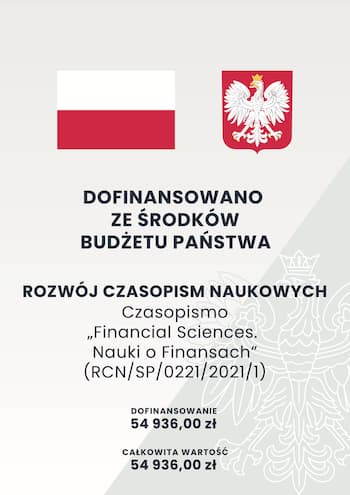The Fiscal Policy of Germany and France. From the Creation of the Euro up to the Pandemic
Abstract
The aim of this article is to demonstrate the development of general government debt and general government balance in two Eurozone countries, Germany and France, in order to investigate the extent of the fulfilment of the convergence criteria. The article is divided into two periods: from the creation of the Euro currency to the period before the global financial crisis, and after it to the time of the pandemic. France and Germany notoriously violated the rules of the Stability and Growth Pact. The beginning of the financial crisis saw a sharp rise in the deficit and debt-to-GDP ratio to over 80% in both countries followed by a fiscal consolidation period. As a result, Germany managed to reduce its debt to 60% of GDP, while in France this indicator achieved a level close to 100% in 2019. The methodology is based on an analytical approach and a literature review of the subject (see Escolano, 2010). Following this methodology, the debt sustainability analysis of the public debt was carried out. According to the author, France should have carried out the necessary structural reforms. Otherwise, if interest rates of ECB continue to rise, France may face a critical situation.(original abstract)Downloads
Download data is not yet available.
Downloads
Published
2022-01-30
Issue
Section
Articles
License
Copyright (c) 2022 Piotr Ptak

This work is licensed under a Creative Commons Attribution-ShareAlike 4.0 International License.







